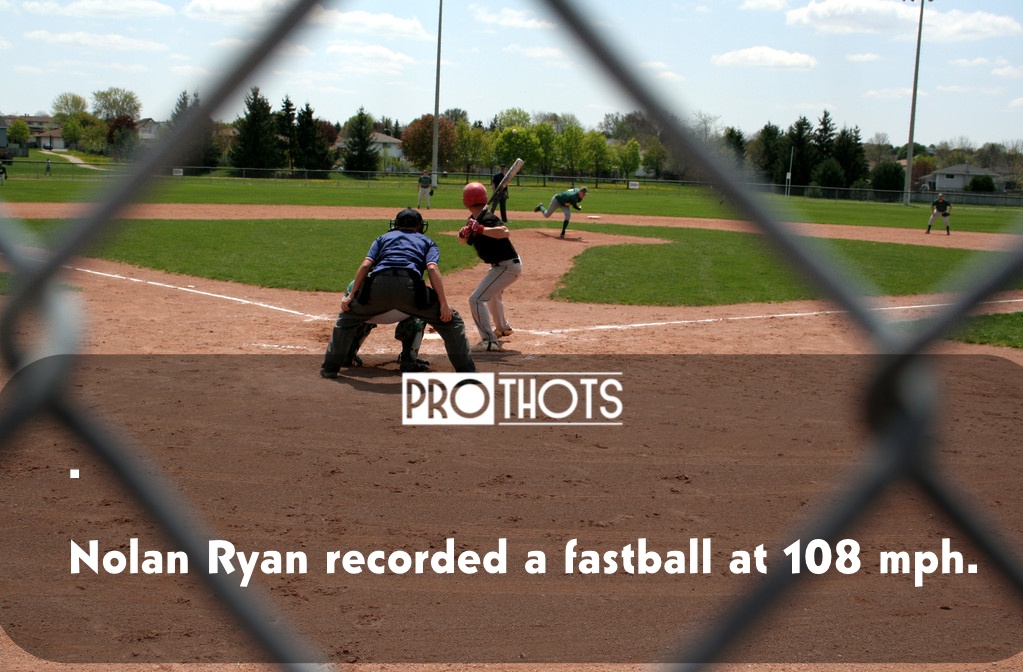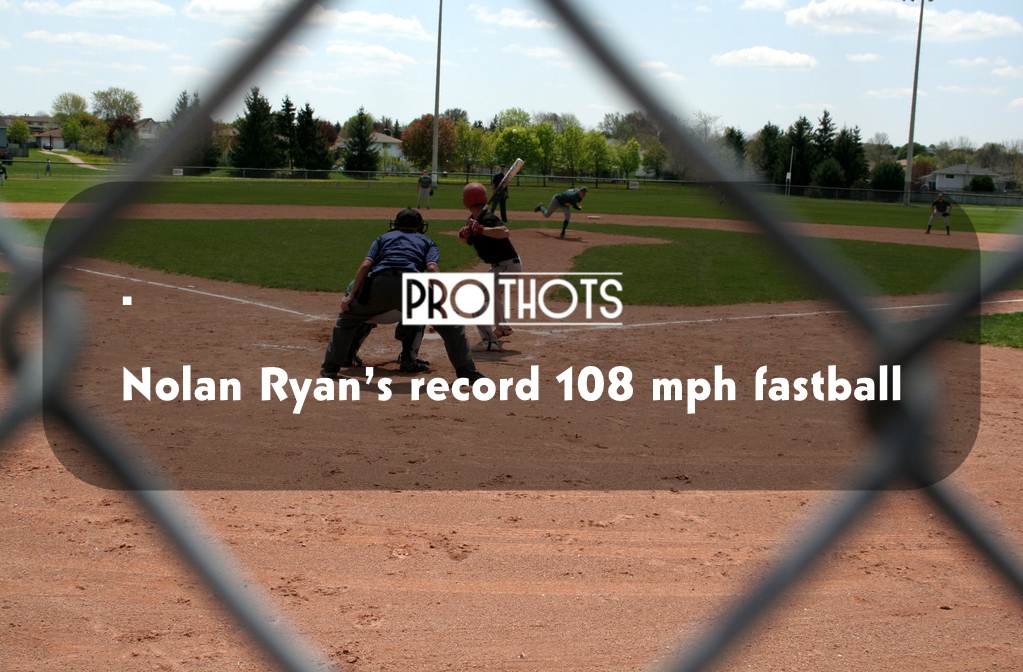Big league pitchers have probably heard, “Throw him the heat!” more than any other phrase. For a very long time, baseball fans have been enamored with the fastball. Unquestionably, the pitchers who threw the hardest are the ones that stick out the most to those who have played baseball.
- At any given moment, who throws the hardest is one of the most important questions in baseball history.
- Aroldis Chapman is currently leading the baseball game. Many referred to Chapman as the quickest thrower of all time after he torched the radar gun at 105 mph a couple years ago.
The documentary Fastball, which conducted a mathematical and scientific study, has made us aware of this error. Nolan Ryan holds the record for the fastest fastball in baseball history, clocking in at 108 mph.
Justification for our love of fastballs
Nolan Ryan recorded a fastball at 108 mph.

Bob Feller is demonstrating the famous high-leg kick. Baseball Heritage Museum.org photo (,)
The fastball adds a confrontational aspect to the game. One of the greatest sports showdowns is the battle between the pitcher and the batter, particularly in those numerous situations where the pitcher knows precisely what he is throwing and the hitters know what is coming. The most primitive part of baseball is the predator-prey relationship that arises when a pitcher throws a hard fastball. It pushes the boundaries of what is humanly feasible.
Fastball does an amazing job at bringing all the thoroughly researched fastball science together. The gap between a 92-mph and a 100-mph fastball is among the most startling analogies offered. If thrown simultaneously, a fastball at 92 mph would still have 4.5 feet of travel left by the time a pitch launched at 100 mph reaches home. At 100 mph, the batter has 0.396 seconds to evaluate the pitch and decide whether to swing. Put another way, a human has a slower rate of blinking.
Thus, the batter finds himself in a unique situation where he must grapple with a cognitive dilemma regarding the limits of human possibility. Despite facing the same acute problem, the pitcher finds himself in a unique situation, pushed to the limits of his physical capabilities.
It’s much better with runners on the bases when the game is over. Beyond the science, there is something inherently compelling about seeing a flame-throwing pitcher clamp down on the other lineup.
The quickest is debatable.
Long ago, the radar gun determined who was the hardest thrower in the current game. All MLB radar guns set their pitch speed to record at the 50-foot mark between the mound and the plate.
Prior to Nolan Ryan’s introduction of the “radar” era in 1974, only two pitchers in history had undergone different methods.
- These pitchers include Bob “the heater from Van Meter” Feller, also known as Rapid Robert, and Walter “Big Train” Johnson.
- Both of these pitchers are among the greatest to ever take the mound, and perhaps the finest of their respective eras.
- These three pitchers stand apart, though, in that they were the first to have their pitches “clocked.”
Since there was nowhere else to test his pitch speed, Johnson determined it on a pistol range. Normally, Remington Arms Co. measured bullet speed with a gadget. All things considered, their 83.2 mph result was incorrect. 83.2 mph is a calculation of how quickly his pitch was moving 7.5 feet behind home plate based on the configuration of the equipment used. He adjusted his pitch speed to 93.8 mph, which was very close to current norms.
Like Johnson, Feller threw a pitch through a gadget. However, this time, the device accurately recorded the speed at home plate. On his quickest pitch in the test, Feller turned in an astounding 98.6 mph. Adjusting his pitch to meet the current norm brought Feller closer to 107.6 mph. At 105.1 mph, Chapman’s officially recorded quickest pitch is 2.5 mph quicker. However, neither of these two pitchers can match Nolan Ryan’s speed.
Nolan Ryan’s 108 mph fastball

Nolan Ryan recorded his fastball at 108 mph.
- 1974 was a seminal year for the way we’ve learned to gauge pitch speed.
- This year marked the introduction of the radar gun idea.
- Some clever people came to the conclusion that using an infrared beam, you could rapidly determine the pitch’s speed.
- You can also configure it to read the same point of measurement again to provide an equitable evaluation of the speed.
- Baseball’s first pitcher to “light up” a major league park’s radar was Nolan Ryan.
Then-Angels pitcher Nolan Ryan lost 1-0 after pitching an 11-inning complete game against the Detroit Tigers on August 20, 1974. Just so you know, Nolan Ryan spent his whole career playing for underperforming offensive teams. He really is a case study in why, in most cases, victories are not the best indicator of a pitcher’s value. In the ninth inning of the game against Detroit, Ryan recorded a speed of 100.9 mph. That indicates that as the game went on, he became stronger!
We must modify Ryan’s measurement, just as we did for Feller and Johnson before him. Ryan pitched ten feet in front of home plate. With the right modifications, his 100.9-mph fastball approaches 108.5 mph. That is, if scorekeeping is important to you, around 3.5 mph quicker than Chapman’s record-breaking fastball. Let the Ryan Express reign!

